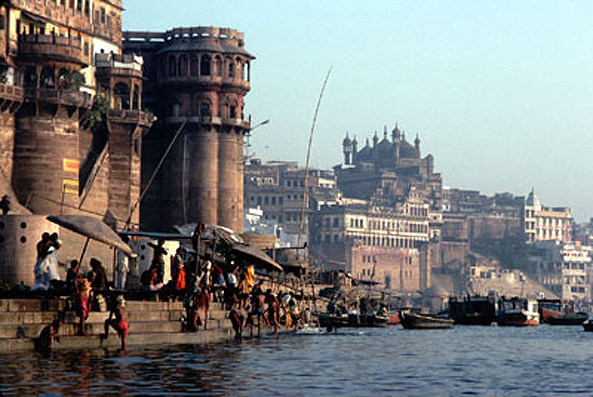The Ganges is the most sacred river of India and the longest river in India. It originates in the Himalayas at Gaumukh and flows into the bay of Bay of Bengal. The seven rivers considered as sacred ones are: Ganges River, Yamuna River, Indus River, Saraswati River, Godavari River, Narmada River.

The Ganges is the most sacred river to Hindus.
The Ganges is the most sacred river to Hindus and is worshiped as the goddess, The Ganges. The river is considered to be pure and holy, and Hindus believe that bathing in the river will purify them.
Hindus also believe that the Ganges' divine waters can purify the souls of the dead, and so they often travel great distances to scatter the ashes of their loved ones in the river. The Ganges is also one of the longest rivers in the world, and it is threatened by severe pollution. Despite this, Hindus continue to revere the river as a holy place.
It is also a lifeline to millions of Indians who live along its course and depend on it for their daily needs.
River Ganga is the third largest river in India and is considered sacred by Hindus. It is also a lifeline to millions of Indians who live along its course and depend on it for their daily needs. The river provides water for drinking, irrigation, and transportation. It also supports the livelihoods of fishers and other river-dependent communities.
The Ganges is a vital source of water for millions of people living in India. However, the river is under threat from pollution and climate change. In order to protect this valuable resource, we must take action to clean up the river and prevent further damage.
The Ganges is the third longest river in the world and flows for over 2,500 miles (4,000 kilometers) from its source in the Himalayan Mountains to the Bay of Bengal.
The Ganges is the third longest river in the world, stretching for over 2,500 miles (4,000 kilometers) from its source in the Himalayan Mountains to the Bay of Bengal. The river is a lifeline for millions of people who live along its banks and rely on it for their livelihoods. The Ganges is also home to a rich diversity of wildlife, including many endangered species.
The river faces many challenges, however, from pollution and over-use. This threatens not only the health of the river but also the people and wildlife that depend on it. We must all work together to protect this vital resource.
Along its journey, the Ganges passes through some of India\'s largest cities, including Delhi, Kanpur, Allahabad, Varanasi, and Kolkata.
The Ganges is the biggest river in India and it is very important to the 400 million people who live along its course. The river is a vital water source for these people and it is also a place of great religious importance. Three of the most sacred places to Hindus - Allahabad, Haridwar, and Varanasi - are located on the Ganges.
The river is unfortunately also very polluted. City sewers along the river's course are the chief culprit, with “uncontrolled development” also a concern. This pollution is having a negative impact on both the environment and the people who rely on the Ganges for their livelihoods.
It is important that something is done to protect this vital resource. We need to make sure that the Ganges remains clean and safe for everyone who depends on it.

Comments
Post a Comment